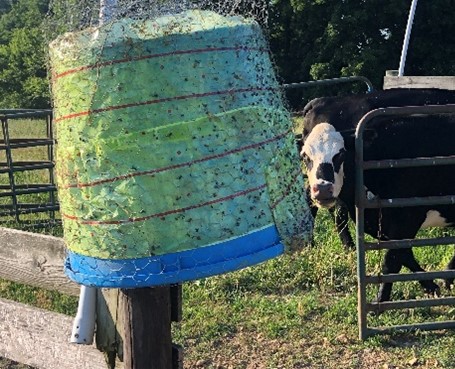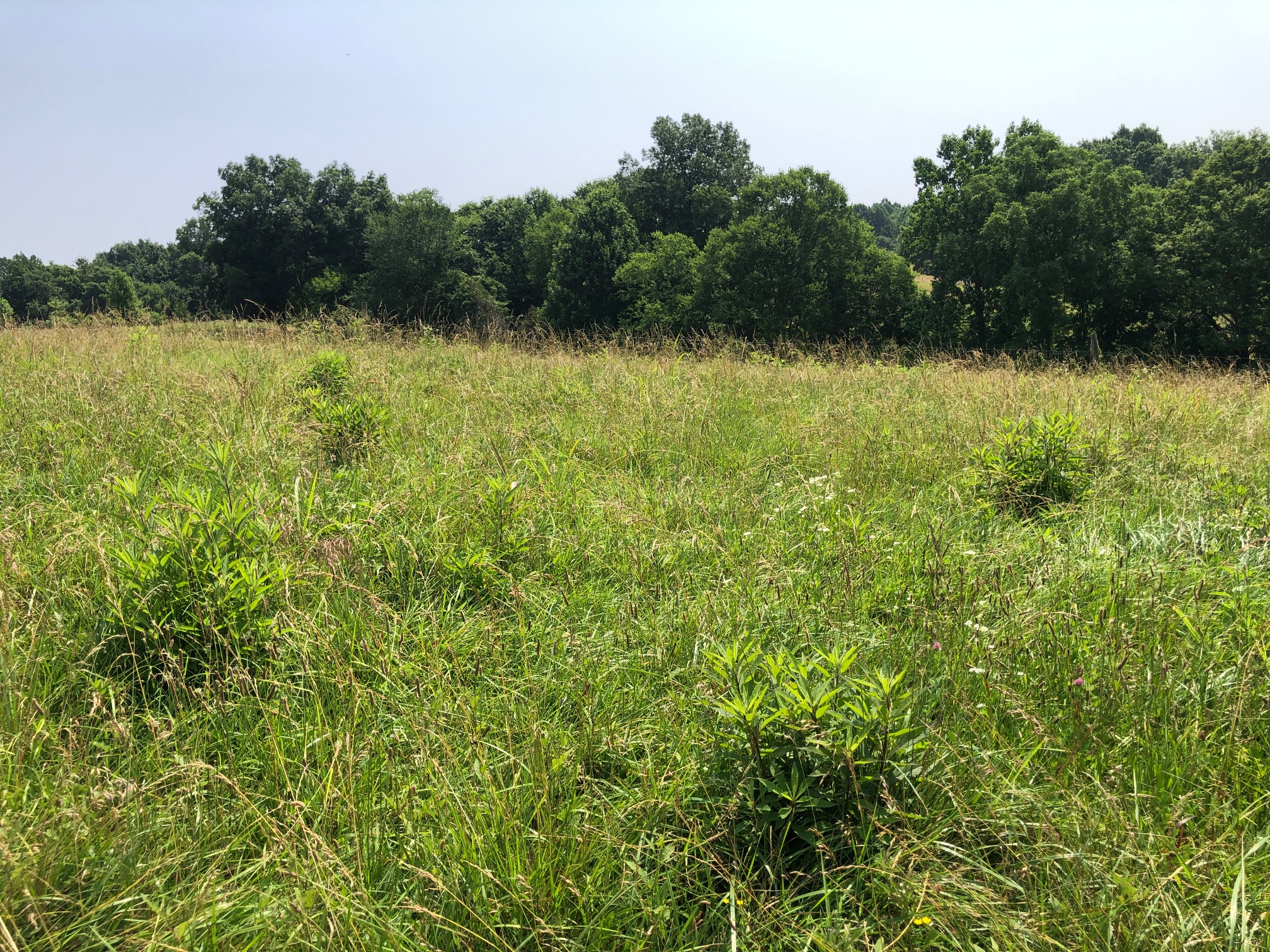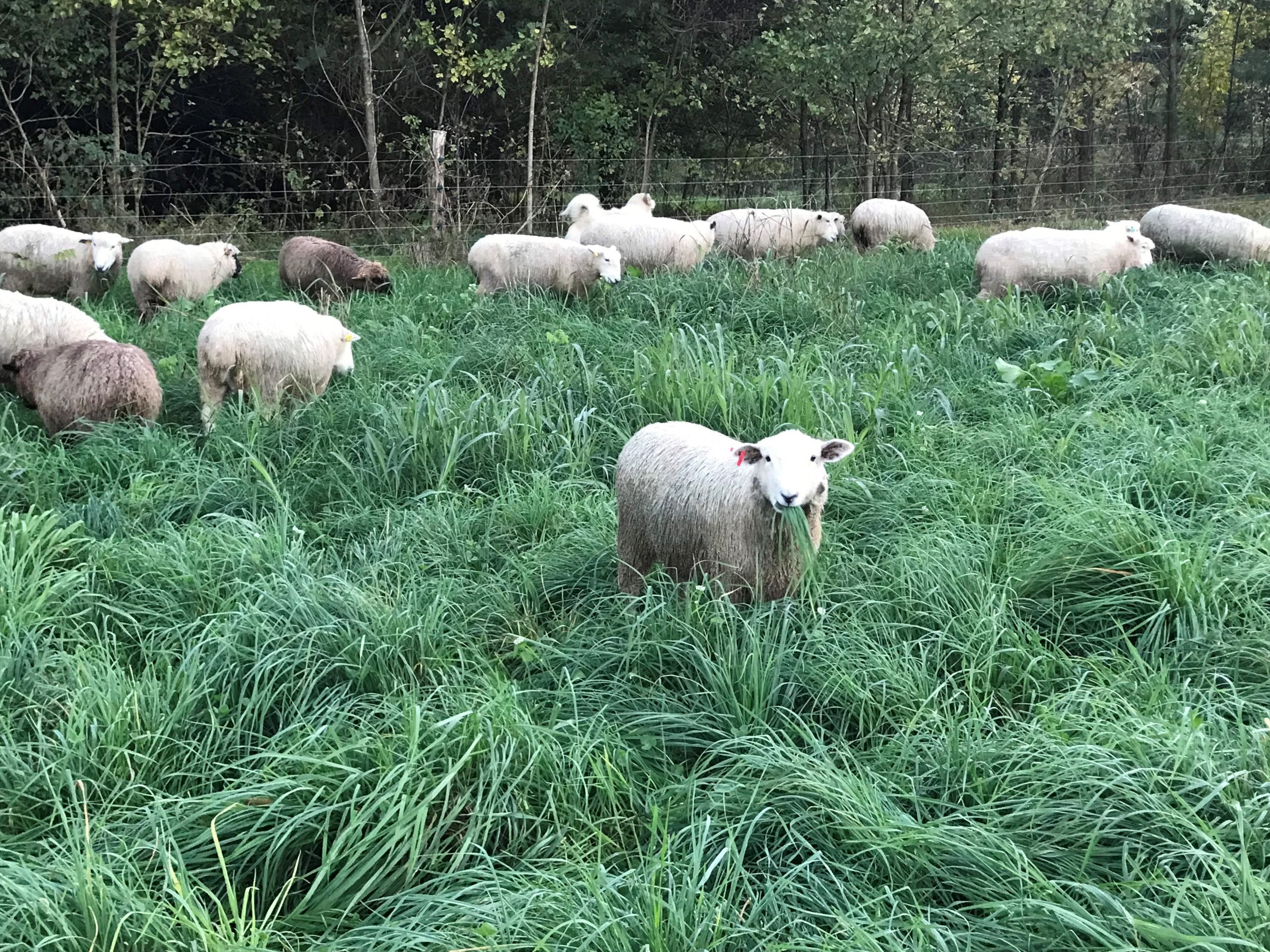Summer Mowing, Controling Flies, and Pasture Condition Scoring
GREETINGS
Weather conditions vary a good bit across the region, but rain is always welcome in summer, and luckily, we’ve had just enough every time it’s been needed. Although moisture is needed to grow grass, the result will be a green-up without growth unless grazing height, plant residue, and recovery time are respected. Over 90% of grass growth occurs by managing residual height, air, sunshine, and rainfall.
MOWING
The common question is, “Should I mow, and if so, how high?” Of course, it depends; mowing costs around $25/ac, so we need to be sure the cost can be recouped. Grazing at high densities of around 40,000 pounds or higher of livestock per acre lays down a lot of the grass, greatly reducing or eliminating the need for mowing. Laying down residual grass also benefits soil health, creating more ground cover and feed for underground livestock. A rule of thumb is to keep light to desirable plants and shade out undesirable plants. Another commonly agreed practice is to control vegetation when weeds occupy 20% or more of a pasture. If I am going to mow, I prefer to mow after grazing and not mow over 20% of the total pasture acreage at one time. Mowing low has more impact on weeds, but remember another principle, manage for what you want, not what you don’t want. Another rule of thumb is to mow 2” into the leaf of grass. Typically, I mow to a 5” height. If the pasture is mostly weeds with little desirable grass, you’ll want to mow low but don’t mow lower than 3” on tall fescue-dominated pastures.

FLY CONTROL
I use several different methods of fly control. The economic threshold for flies is 200 per cow. My favorite fly control is one or more pounds of garlic powder mixed with 50 pounds of mineral. I get my garlic from webrestaurantstore.com. Keep the garlic sealed till you use it, or it will harden and ball up.
As pictured, I also use 12” fly paper wrapped around an old protein tub. After I caught several birds on the paper, I added chicken wire. The birds were likely eating more flies than I was catching. I am thrilled to see birds pick flies off the paper without getting stuck, which is a win-win. I place these around facilities like water and mineral sites. Sometimes I mop vegetable or mineral oil on cattle to reduce flies for about a week. I also have a walk-through fly trap that works best in a lane. We use it for our dairy. Plans for the walk-through fly trap are available online.
WATER
Water is the most important nutrient. Livestock consumes up to twice as much water if they don’t have shade. Production of meat and milk is higher with higher water consumption. Additional water points can improve consumption, availability, grazing, and nutrient distribution. Mobile water can be used in addition to a permanent water source. I like the Jobe Mega Flow valve plumbed into a 40 to 50-gallon trough. Place a hot wire across the trough to prevent cattle from stepping on the valve. If you are not getting water to a high point on the landscape, you will most likely need more pressure. Pressure switches cost about $100, so it is an easy fix. The pressure needed is one psi for every 2.31’ of elevation. For example, a 100’ elevation difference needs 44 psi or more. There is some pressure loss for distance, but most loss is due to elevation. Watch float settings and connections. Leaky water troughs cost water loss and make a puggy mess.
SEEDING
Generally, it is best to manage the grass you have, but bare ground is terrible. It’s getting a little late to seed warm-season forage, but it can work with moisture. Now is the best time to sow if you are seeding into cool season forage like thin, tall fescue because cool seasons go dormant in warm, dry conditions. Crabgrass is a reseeding annual, so I prefer it to other options like sudangrass or millets. There are several improved types of crabgrass: red river, quick and Big, mojo, and others; they are all good. Crabgrass sets you up nicely to seed tall fescue or orchardgrass in September. Annual Lespedeza is a good companion with crabgrass and reseeds well. Bermudagrass is a good option if you feed in the same area yearly.


These two photos show the pasture before turning in, and after grazing.
Here’s that same pasture after using short-duration high-density grazing with ~50,000 pounds of livestock per acre. This can reduce the need for mowing.
GRAZING
If you haven’t tried top-third grazing, I encourage you to try it. An example of top-third grazing is to turn in when the grass is 9” tall and grazing down to 6” or turning in at 6” tall and out at 4”. Regrowth is much faster, and the stock is consuming the best forage but not overgrazing the best plants. It works best with high-density, short-duration grazing. Some folks think stomped-down forage is wasted, but it has many benefits. First off, it is energy (carbon) stored for the future. Other benefits are moisture conservation, weed control, and feed for the below-ground herd, which will, in turn, make water-stable soil aggregates which improves poor space and water infiltration, among other benefits.
The featured photo at the top of this post was a degraded pasture, brought back to life. I unrolled plenty of hay, applied some needed lime, and utilized top third grazing.
EVALUATING PASTURES
The best time to evaluate pastures is just before grazing. Look straight down at the pasture evaluating the following indicators.
Pasture Condition Scoring (PCS) involves rating 10 Indicators: Percent of Desirable Plants, Percent of Legume, Live Plant Cover (includes dormant), Plant Diversity, Plant Residue (Litter) as Soil Cover, Grazing Utilization and Severity, Livestock Concentration Areas, Soil Compaction and Soil Regenerative Factors, Plant Vigor, Erosion (Sheet and Rill, Streambank, Shoreline, Gullies.) All these factors are important; determining the weak link in your operation is key to your success. Once you determine the weak link on a pasture, you can focus on it for the biggest return on investment of time and money. Another similar assessment, Determining Indicators of Pastureland Health (DIPH), involves 22 indicators.
SMALL RUMINANTS
Sheep are grazers, and goats are browsers. The common question is, what ratio of small ruminants to cattle do you prefer? As usual, it depends primarily on the vegetation you have. Goats have a very different diet than cattle, so you can stock up to two goats for every cow and not affect cattle grazing. You may even improve it because the thorny species are out of the way. On the other hand, sheep eat a very similar diet to cattle, so one sheep for every couple of cows is probably best. You can push that up a little bit if you keep your forage vegetative. Lambs don’t do well in tall grass. Animal unit equivalents to a 1000-pound cattle are five sheep or six goats. Training small ruminants to respect electric fences will make your life easier.
SUMMARY
Manage what you have by keeping more leaf on your grass and strive to keep it vegetative. Maintain quality water, rotate stock when the pasture is soiled, and mow if you need to reset mature grass and make it more vegetative or if weeds are greater than 20% of the pasture. And lastly, control flies. Over 200 flies per animal diminish your bottom line by causing weight loss and spreading disease.
Remember that if you want to “turn on your pastures,” you must feed the livestock below ground.

Strive for each grazing to be better!
Greg Brann
Synergistic Grazing Management
EVENTS
October 19, Big Spring Farm Pasture Walk, Adolphus, KY
November 1, Kentucky Grazing Conference, Low-Stress Livestock Handling, Lexington, KY.
February 15, Grazing for Profit, Harriman, TN (865) 248-3159,
